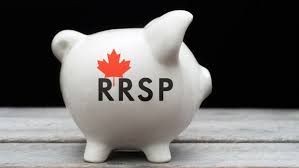 We’re nearing the end of the 2017 RRSP deadline, and if you haven’t already done so, you may be considering topping up your RRSPs before March 1st. In order to avoid over-contribution penalties, it is wise to have a good understanding of exactly how much you can contribute into your RRSP. Below are some steps to follow before making any further RRSP contributions.
We’re nearing the end of the 2017 RRSP deadline, and if you haven’t already done so, you may be considering topping up your RRSPs before March 1st. In order to avoid over-contribution penalties, it is wise to have a good understanding of exactly how much you can contribute into your RRSP. Below are some steps to follow before making any further RRSP contributions.
Look At Your Prior Year Notice Of Assessment
A great place to start is to take a look at your 2016 Notice of Assessment (NOA) that you would have received after filing your 2016 tax return. Your 2017 RRSP deduction limit will be on your NOA, and it is based on 2016’s earned income and any applicable pension adjustments.
Review Your Current Year Contributions To Date
Your second step is to determine how much you have already contributed in 2017 and during the first 60 days of 2018. Have you already received all of your RRSP contribution receipts? If not, check your banking records or contact your financial institution to confirm how much you’ve already contributed. By doing so, you know exactly how much, if any, contribution room you have remaining.
Consider Your Tax Situation
If you are doing your taxes yourself, enter all the information and slips you have already received into your tax software and then enter the tentative amount of additional RRSP contributions that you are planning on making to determine whether or not it would be advantageous to contribute additional funds into your RRSP. If doing so increases your tax savings, then it makes sense to contribute additional funds into your RRSP before the March 1st deadline. If you hire a tax professional to do your taxes (which I highly recommend), then have them pop your info into their software and then get their advice as to how much more of an RRSP contribution would be to your advantage.
Consider Your Cashflow Situation
Even if you have sufficient RRSP contribution room, if you are tight on cash right now, I would not recommend that you make anymore RRSP contributions for 2017. Instead,build up an emergency fund and then once you have sufficient funds set aside, you can start making RRSP contributions again. Although they won’t be able to help you out for 2017, you will have made headway on saving for retirement while saving on taxes in 2018.
There are many arguments for and against contributing to RRSPs. RRSPs, when used strategically, can provide tax savings while also being a great retirement savings tool. By following the steps above, you will be well on your way to making a wise decision regarding whether or not to contribute more to your RRSPs for 2017.




No Comments